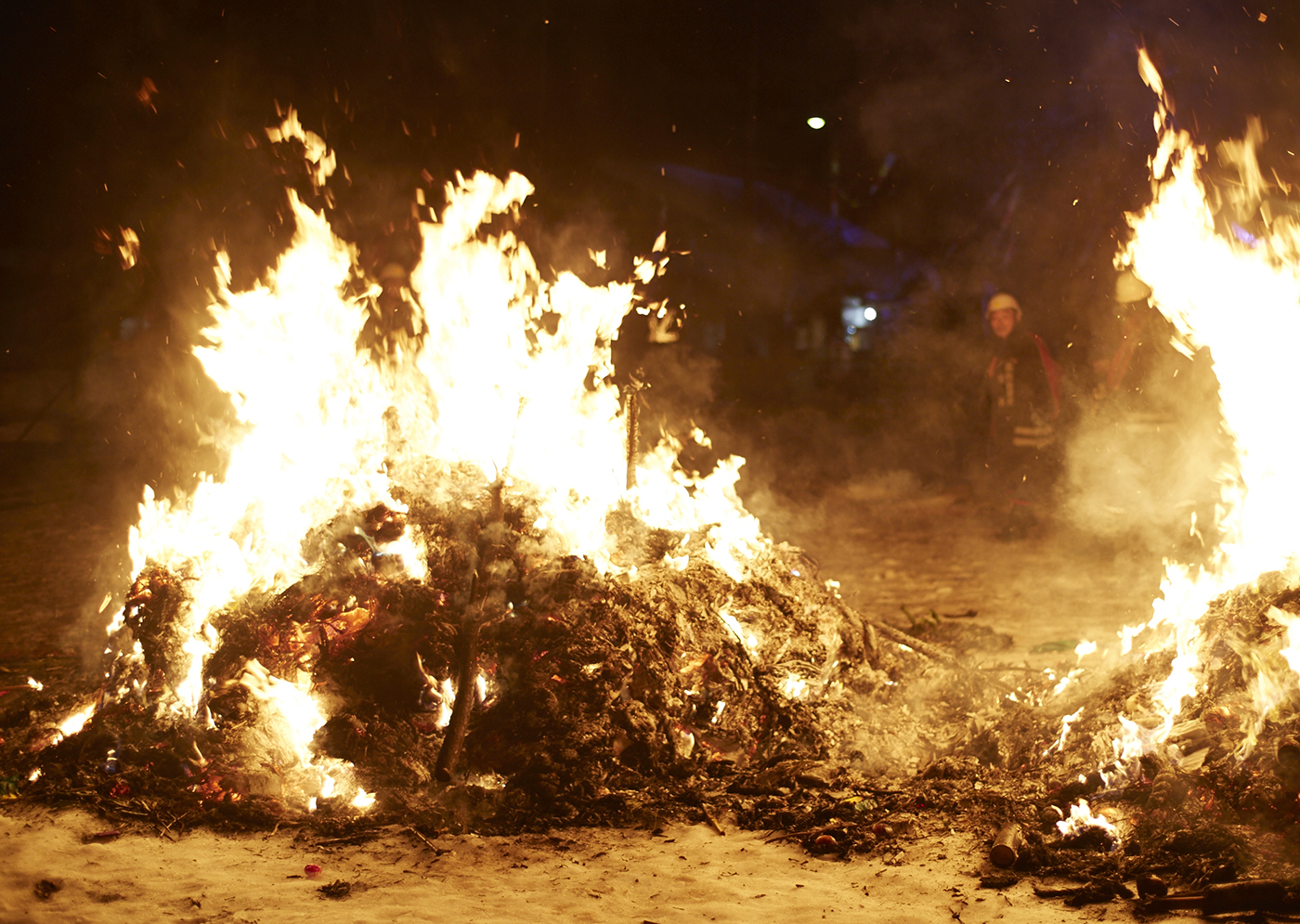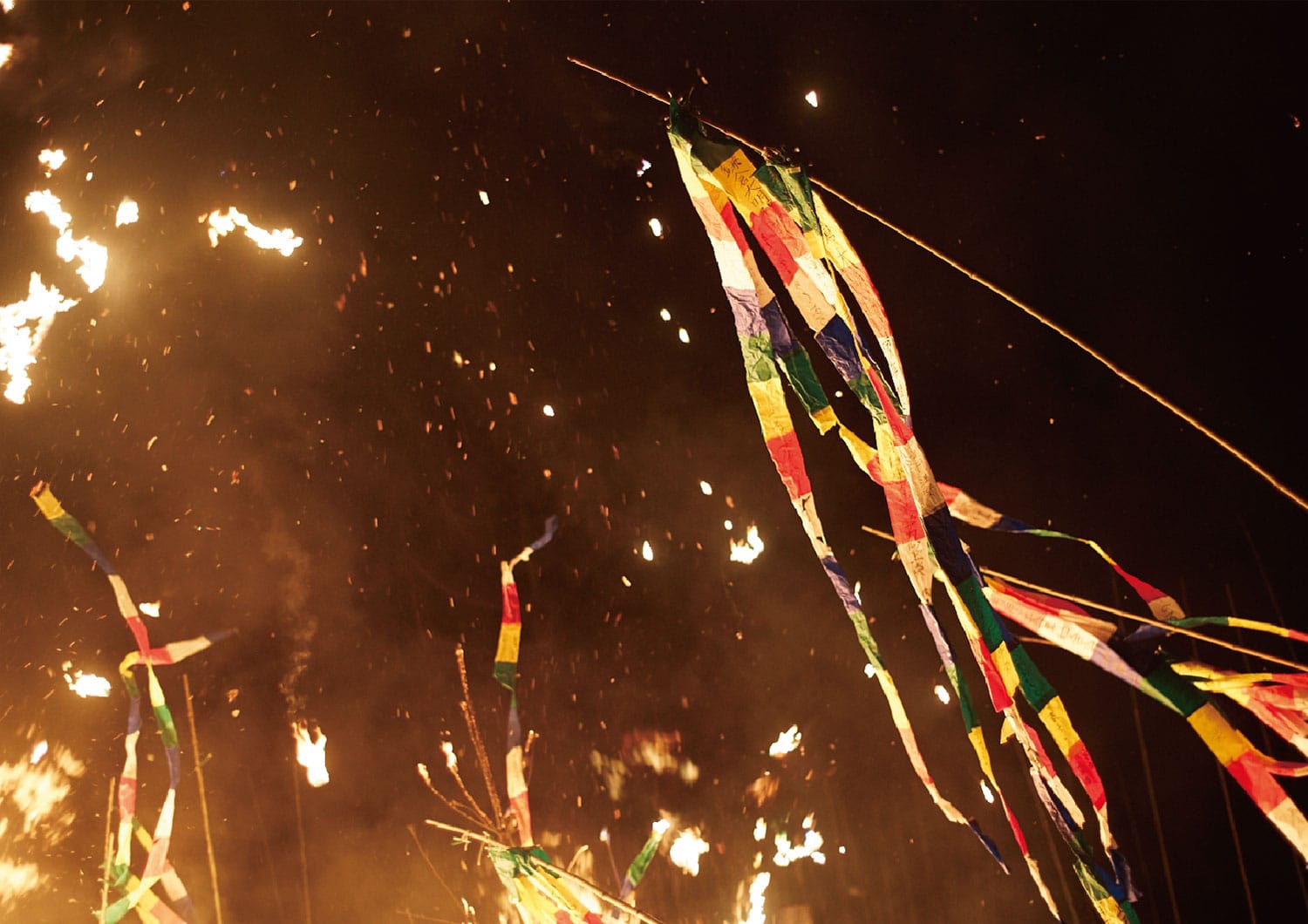February 15th Here we are in Rokugo, Misato. Today is the last day of the Rokugo Kamakura. The Rokugo Kamakura is a koshogatsu event dating back over 700 years. It is a festival to pray for a good harvest and it’s been designated as a “National Important Intangible Folk Cultural Property.”
Lecturers:
Rokugo Kamakura participants
- 1. Kakunodate Hiburi Kamakura
- 2. Rokugo Kamakura
- 3. Yokote Kamakura (Part 1)
- 4. Yokote Kamakura (Part 2)
Written by Fumiko YABUKI
Editor; former designer. Born and raised in Akita, she is a hardcore Akita native! She is Deputy Chief Editor for the free magazine “non-biri”.
Photographs by Yoma FUNABASHI
2Rokugo Kamakura
The festival starts on February 11th. People write their wishes for the year ahead on long multi-colored strips of paper (green, yellow, red, white, blue) and hang them as decorations from green bamboo sticks. These pennants are known as tenpitsu kaki. Local neighborhoods build torioi-goya (literally “small houses to drive away birds”) with thatched roofs and dedicate these to the kamakura daimyojin (“the great kamakura deity”).
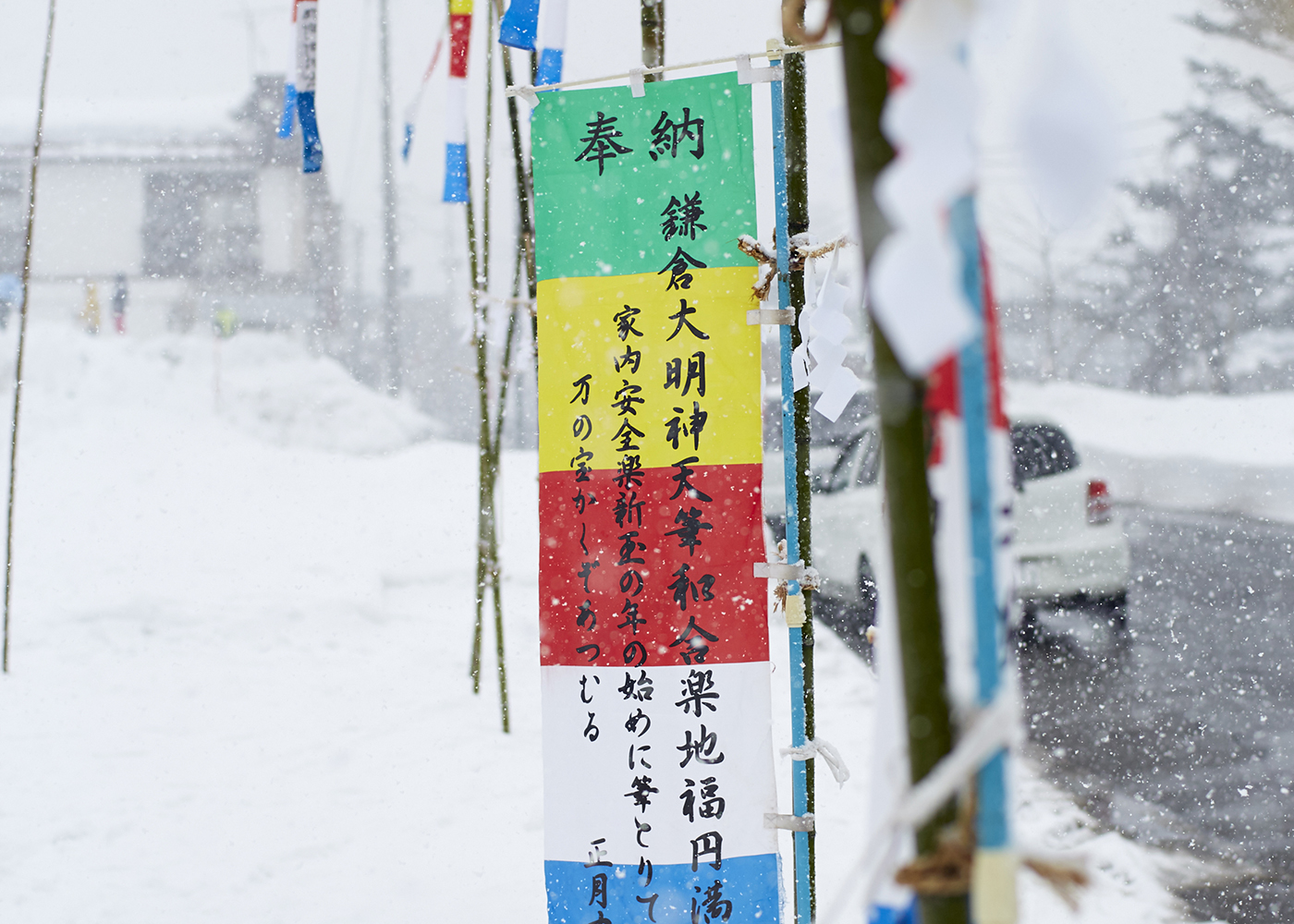
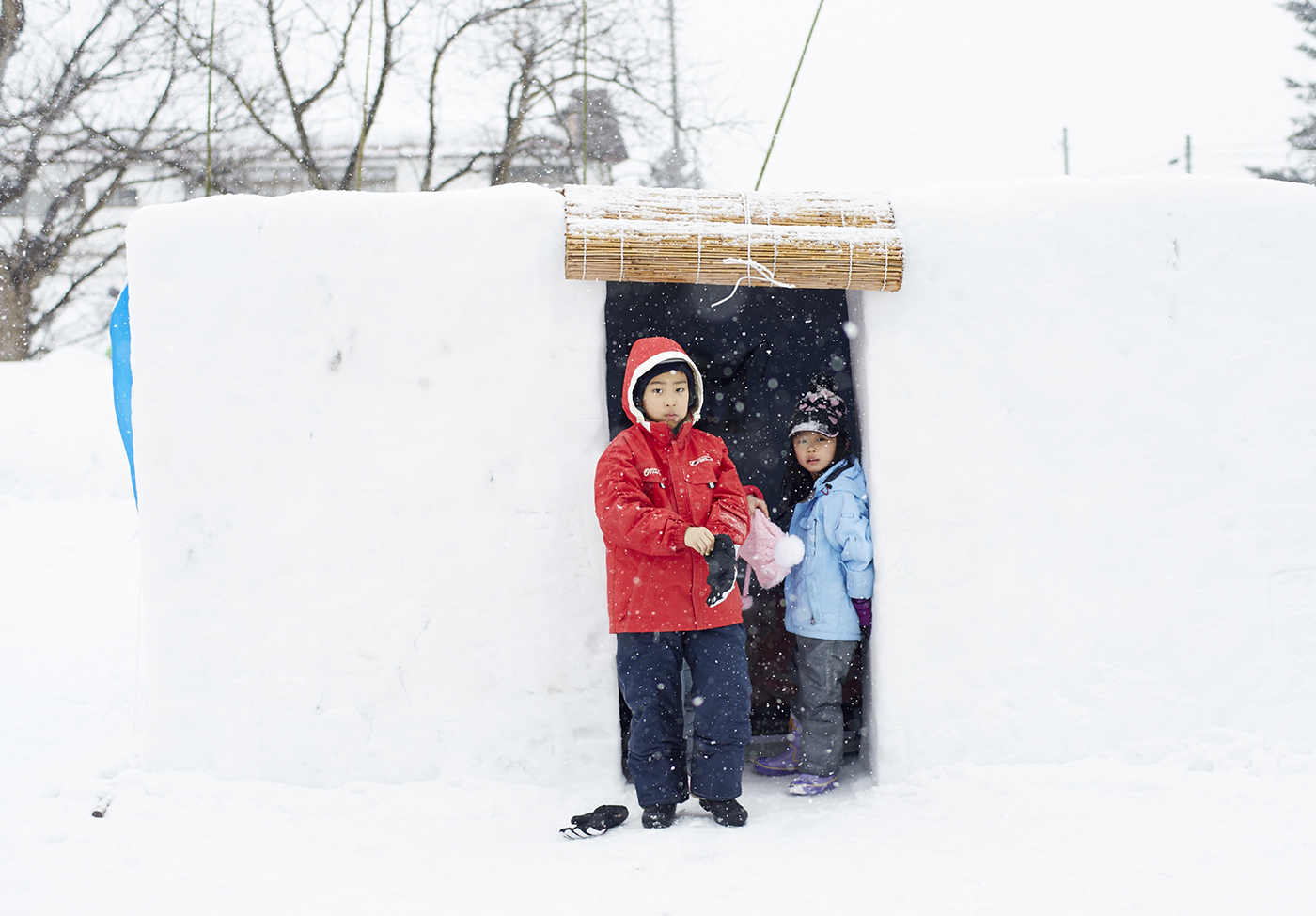
Anyone can write these tenpitsu, locals and tourists alike. Whatever country you’re from, someone can help you write your message on a tenpitsu pennant. The decorations add a splash of color to the town all shrouded in white.
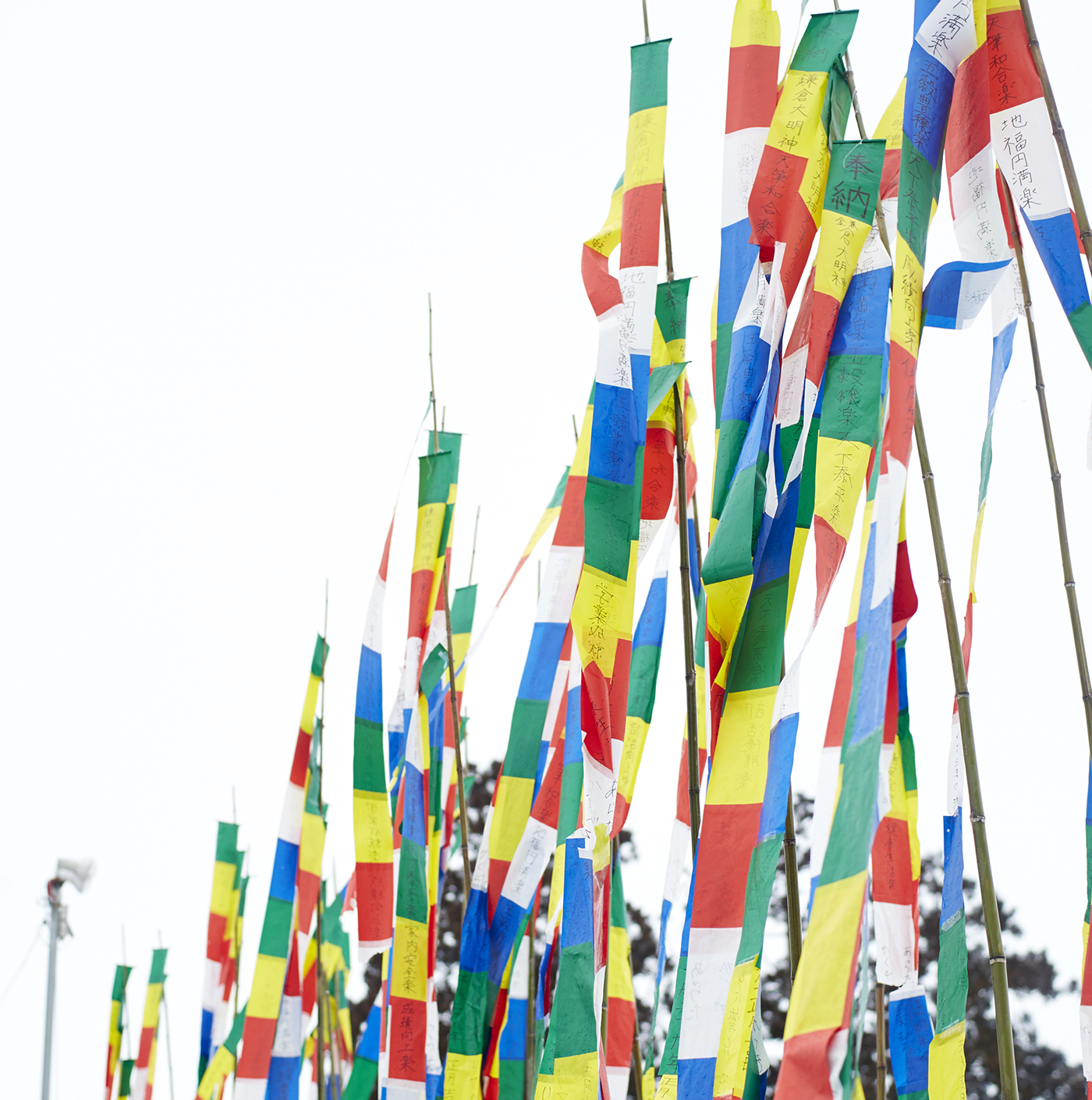
The climax of the event, the Tenpitsu-yaki (“Burning of the tenpitsu”) and Takeuchi (“Bamboo hitting”) takes place on the field in front of Suwa-jinja on the night of the 15th.
At the Tenpitsu-yaki, all the tenpitsu from the neighborhood are gathered up and burned on the dondo-yaki, a bonfire made from decorations used for the New Year celebrations, such as shimekazari (traditional straw ropes).
For the Takeuchi, the town is divided into two teams, North and South. The two teams brandish 6m long bamboo sticks and use these to fight each other. The tradition is that if the North wins, there will be a bumper harvest that year, and if the South wins, the price of rice will rise.
These events, lasting from February 11th to 15th, make up the Rokugo Kamakura.
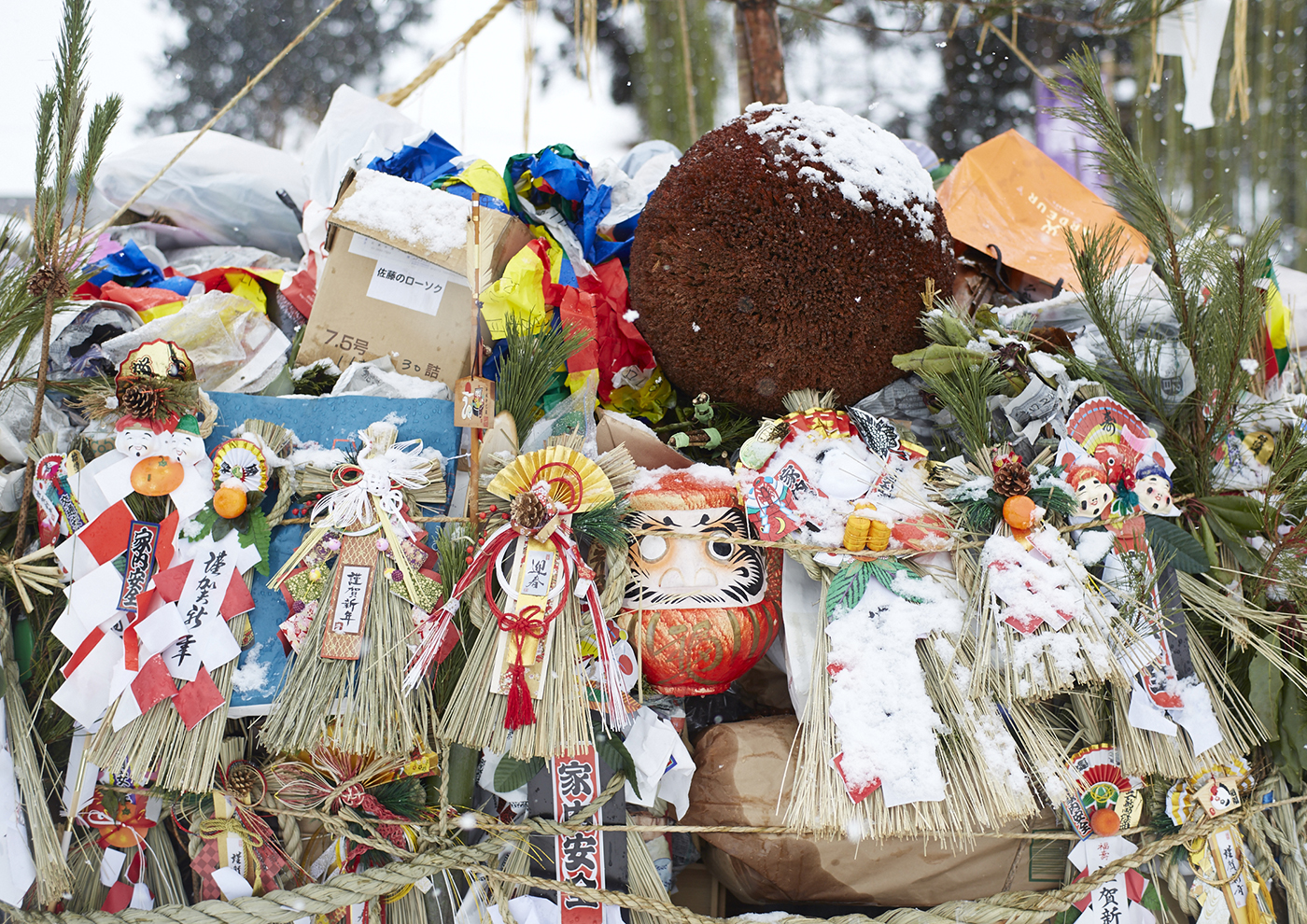
7:00 PM The Tenpitsu-yaki and Takeuchi are about to start. I go to see one of the groups from the North army, Asahi-machi, and the men are just getting ready to march out together.
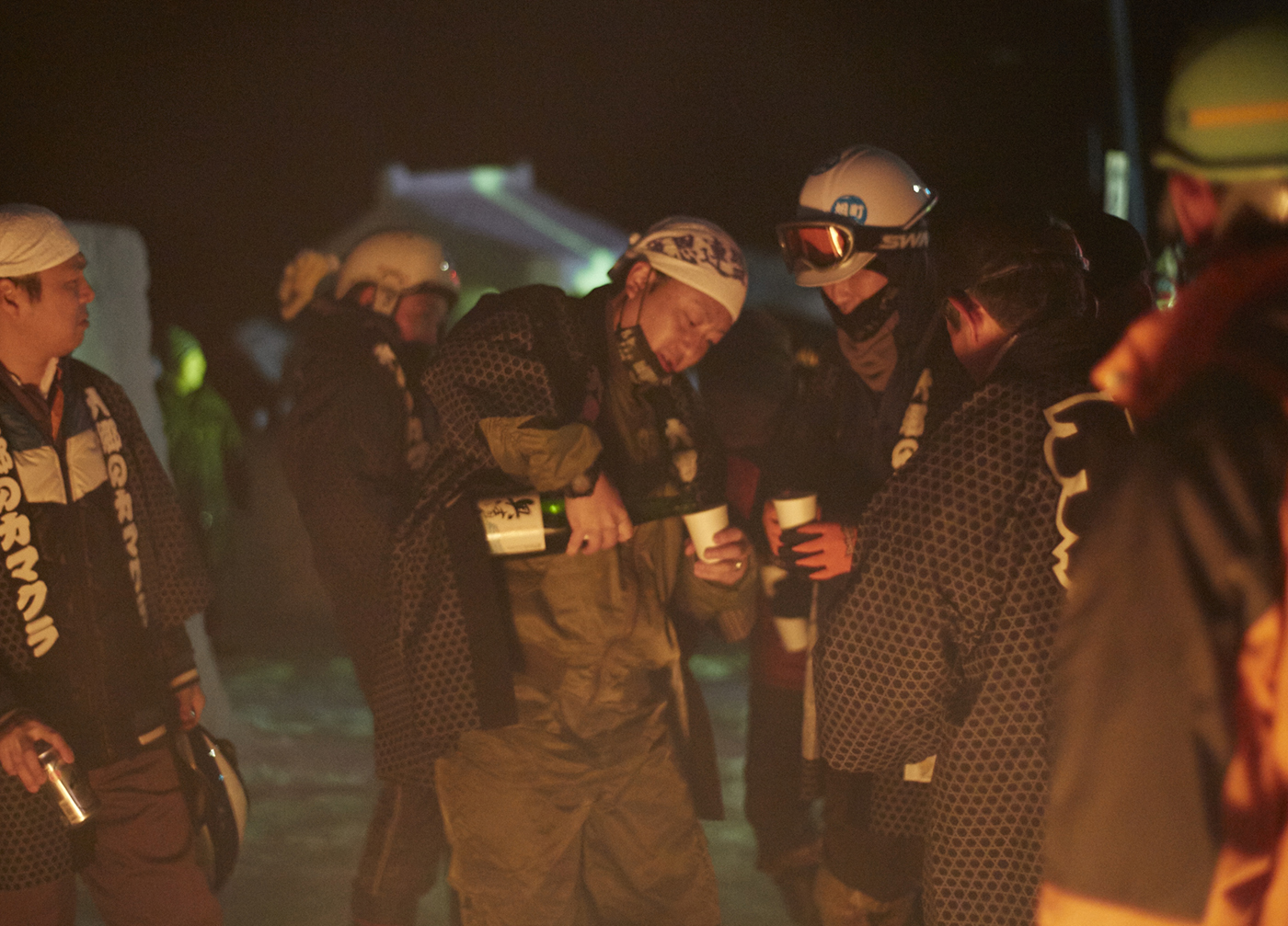
- YABUKI
- Look at all the helmets! You look like divers! You’re well covered up! Is it all your own kit?
- Man
- Yes. It’s all my stuff!
- YABUKI
- Do you do this every year?
- Man
- Nope. Actually, this year is my first time. I’m from Osaka, but I work here in Akita.
- YABUKI
- I see! How are you finding it? Doing Takeuchi for the first time, I mean!
- Man
- It’s great fun! I love it!
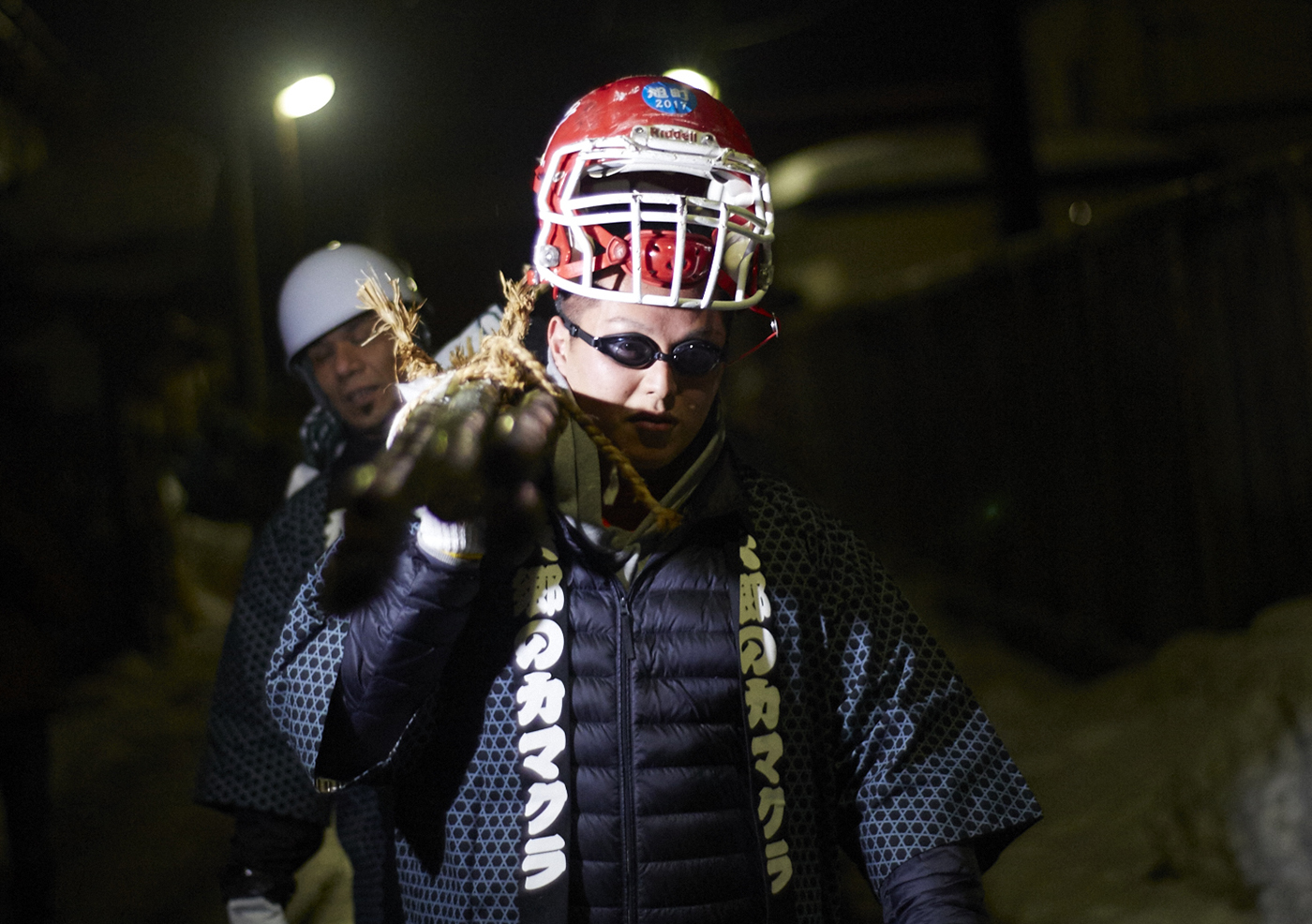
- YABUKI
- Not nervous?
- Man
- I’ve done the Somin Sai Festival (Naked Festival) in Iwate every year…
- YABUKI
- Wow.
- Man
- …But this is wild. If you put a foot wrong, you can get hurt, but I love it!
- YABUKI
- I think it sounds fun!
- Man
- If you’re not careful, you can get knocked down as soon as the battle starts.
- YABUKI
- Ha ha! You’re off in a moment, I think!
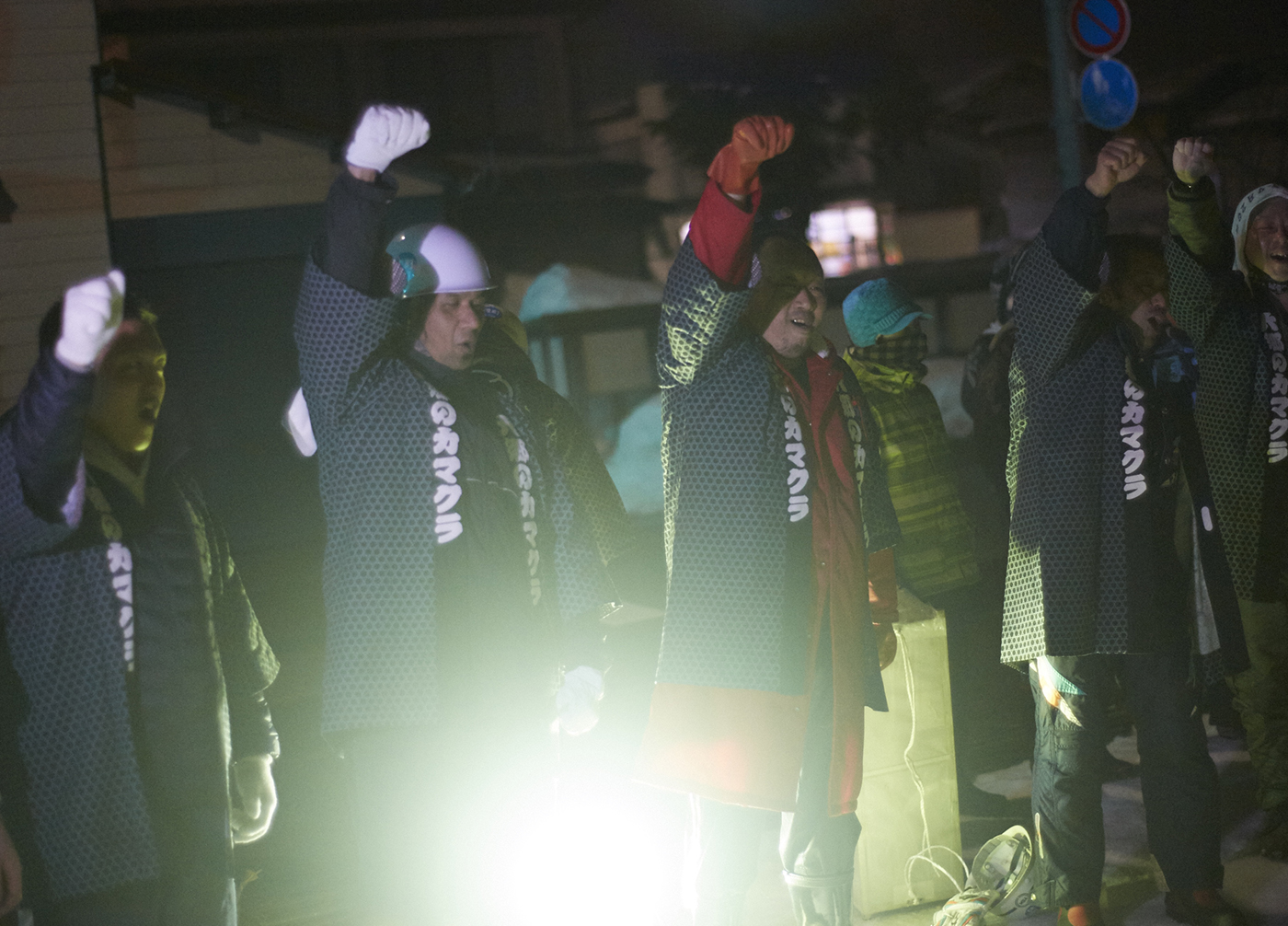
- Asahi-machi army
- We beat them last year. We can do it again this year, boys! Everyone, let’s hear it for Asahi-machi! South Army – you’re going down again this year!
- Everyone
- Ha!
- Asahi-machi army
- Forwards!
- Everyone
- Ha ha!
- Asahi-machi army
- Let’s go boys!
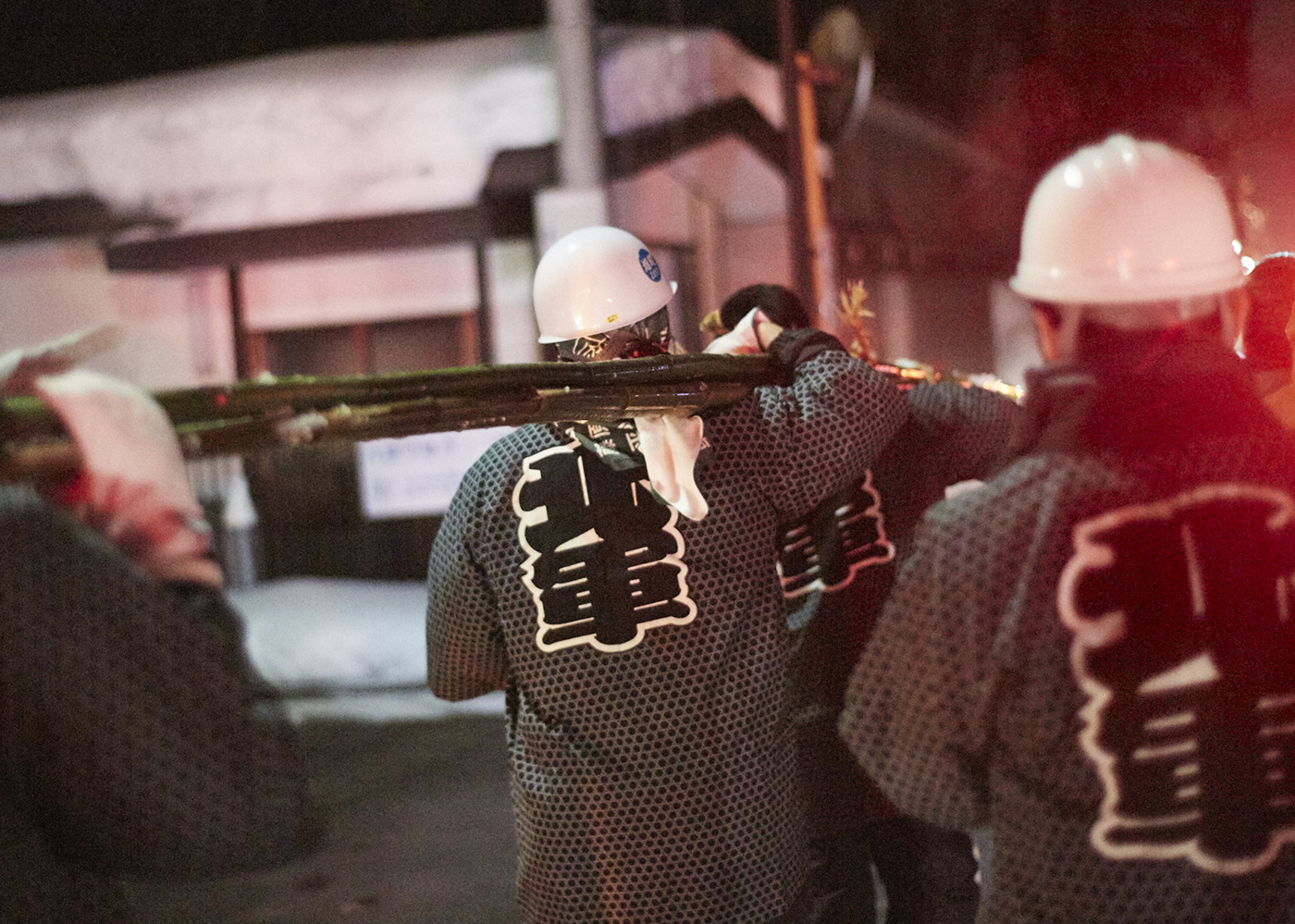
The men move off, carrying their long bamboo sticks to the battlefield. I chat with some of them along the way. This is Koji Arata-san.
- YABUKI
- Any butterflies ahead of the battle?
- ARATA
- Actually, I’m really nervous!
- YABUKI
- It gets your adrenalin going for the contest, I guess?
- ARATA
- You bet. From on our way to the venue!
- YABUKI
- Good luck!
- ARATA
- My heart’s in my mouth!
- YABUKI
- You only do this once a year, right! This is the first time I’ve seen this but I’m feeling pretty nervous already! Arata-san, how many times have you done this?
- ARATA
- Well…this is my fortieth or fiftieth time!
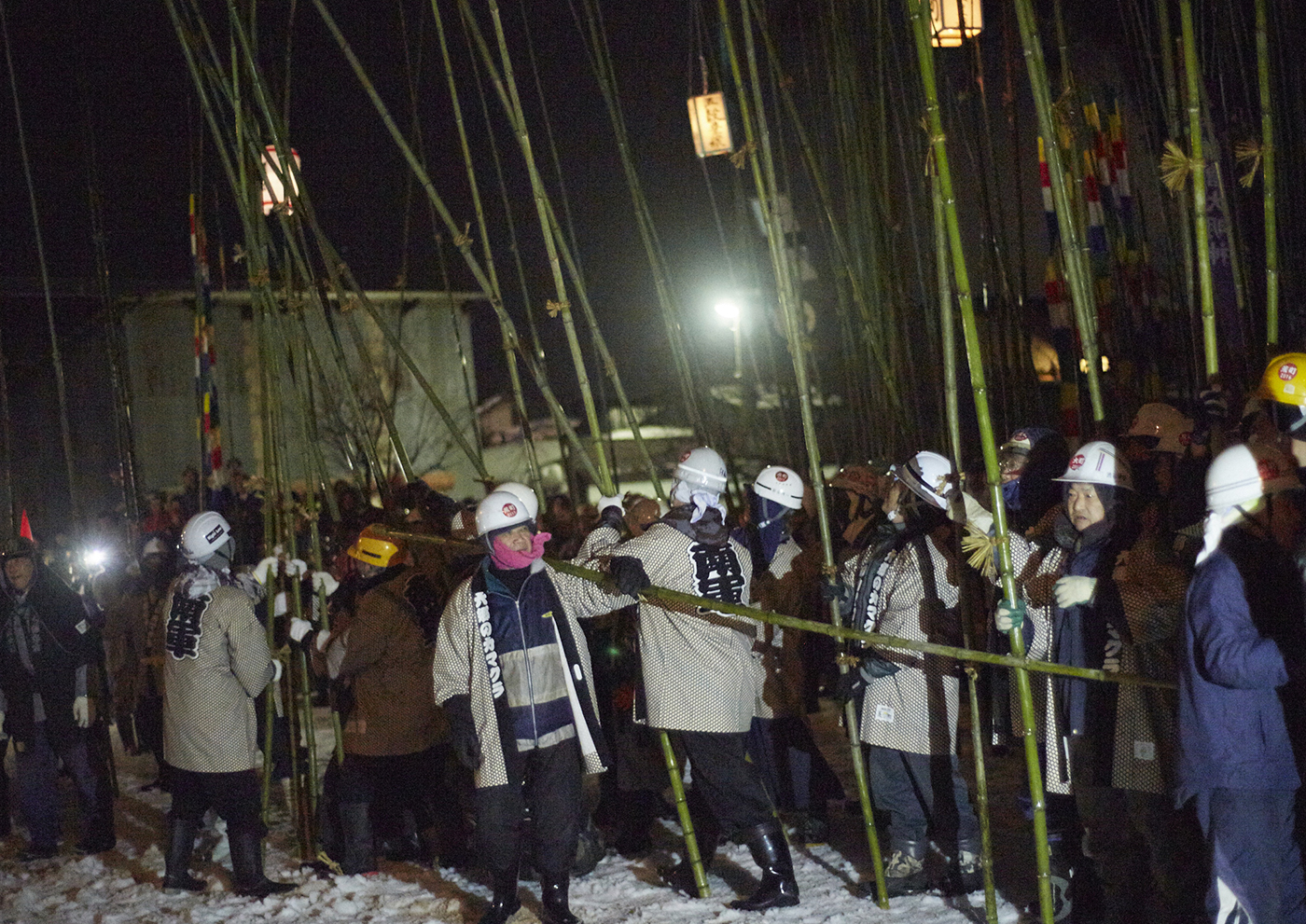
- YABUKI
- So you’ve done this ever since you were young?
- ARATA
- Yeah. For me the year doesn’t actually start until I do this. Nowadays I usually bring the bamboo sticks by car, but in the old days I used to carry them here on my shoulder. I had more sticks then than I do now. I decide out where we’re going to line up and put the sticks down there. I’m like a bamboo sentry.
- YABUKI
- A sentry? You’re like a lookout for the bamboo, you mean?
- ARATA
- That’s right. When the fighting starts, you have to make sure that someone from the other side doesn’t nick your bamboo.
- YABUKI
- Ah, I see! Do you think you’re going to win again this year?
- ARATA
- Well…. I’ve got no idea to be honest…! (Laughs).
- YABUKI
- How do they decide who the winner is?
- ARATA
- The side that’s pushed back loses. There are three rounds in total, and the winner is the side who wins the best of three.
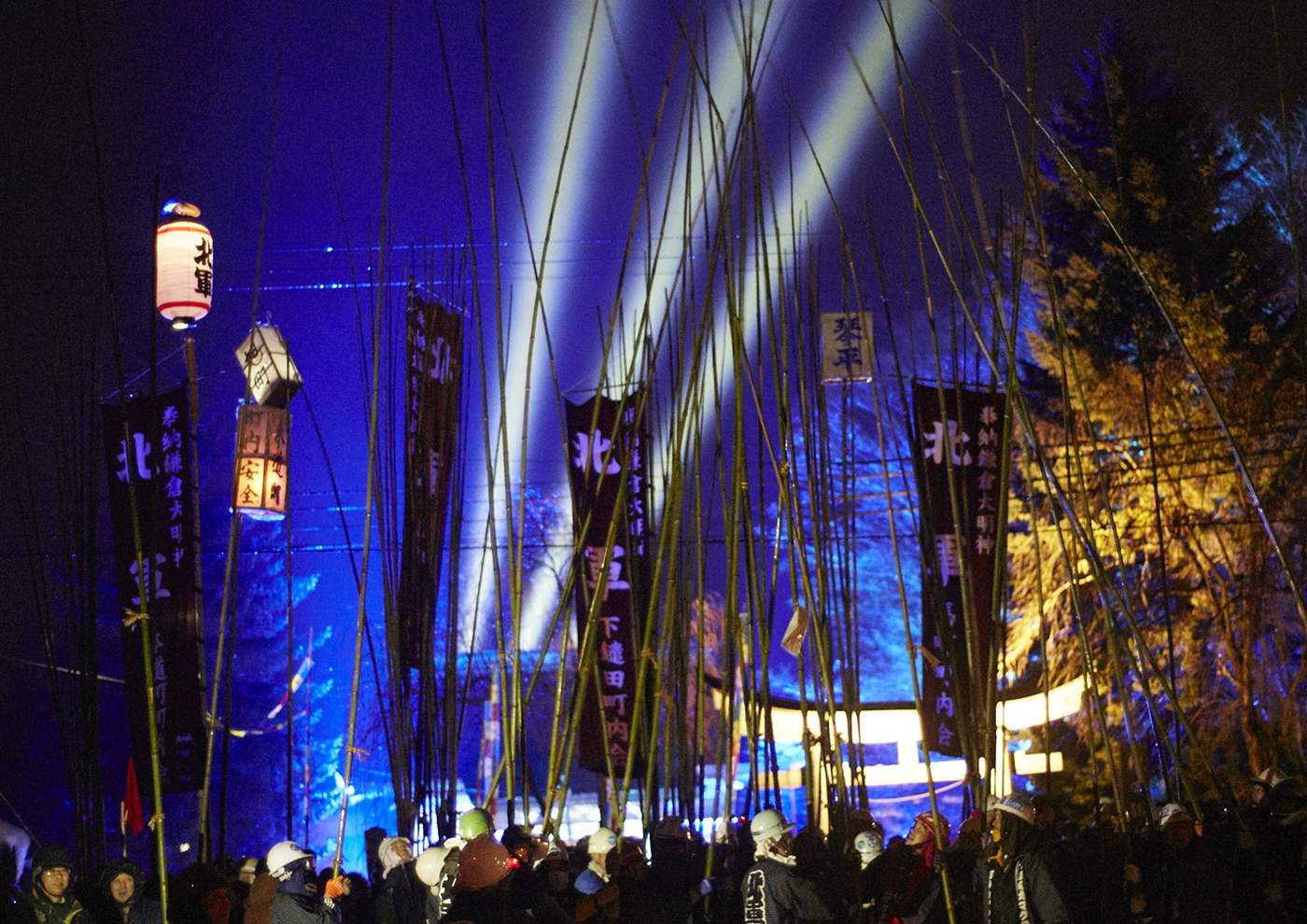
- YABUKI
- The North has won in recent years, right? Any particular reason for that?
- ARATA
- I guess it’s do with sheer weight of numbers and having the bigger army! I used not to wear a helmet, but I kept being hit on the head!
- YABUKI
- What! That must have hurt!
- ARATA
- Yeah. I got clattered.
- YABUKI
- But I suppose that’s like a medal for your efforts, right?
- ARATA
- Yep. That’s right, like a medal.
- YABUKI
- And your win brought good fortune I suppose…
- ARATA
- That’s right. But I got bumped on the head and I was still aching a month later. We’re not that stupid anymore. We make sure we’re well protected.
- YABUKI
- I guess you don’t think about the pain in the heat of the moment! (We approach the venue). We’re about to start!
- ARATA
- Yep. It’s about to start. I’m not sure there are enough people this year…
- YABUKI
- Looks like plenty of people to me…
- ARATA
- No! There are definitely less than there used to be! In the past, we used to get thousands turning up.
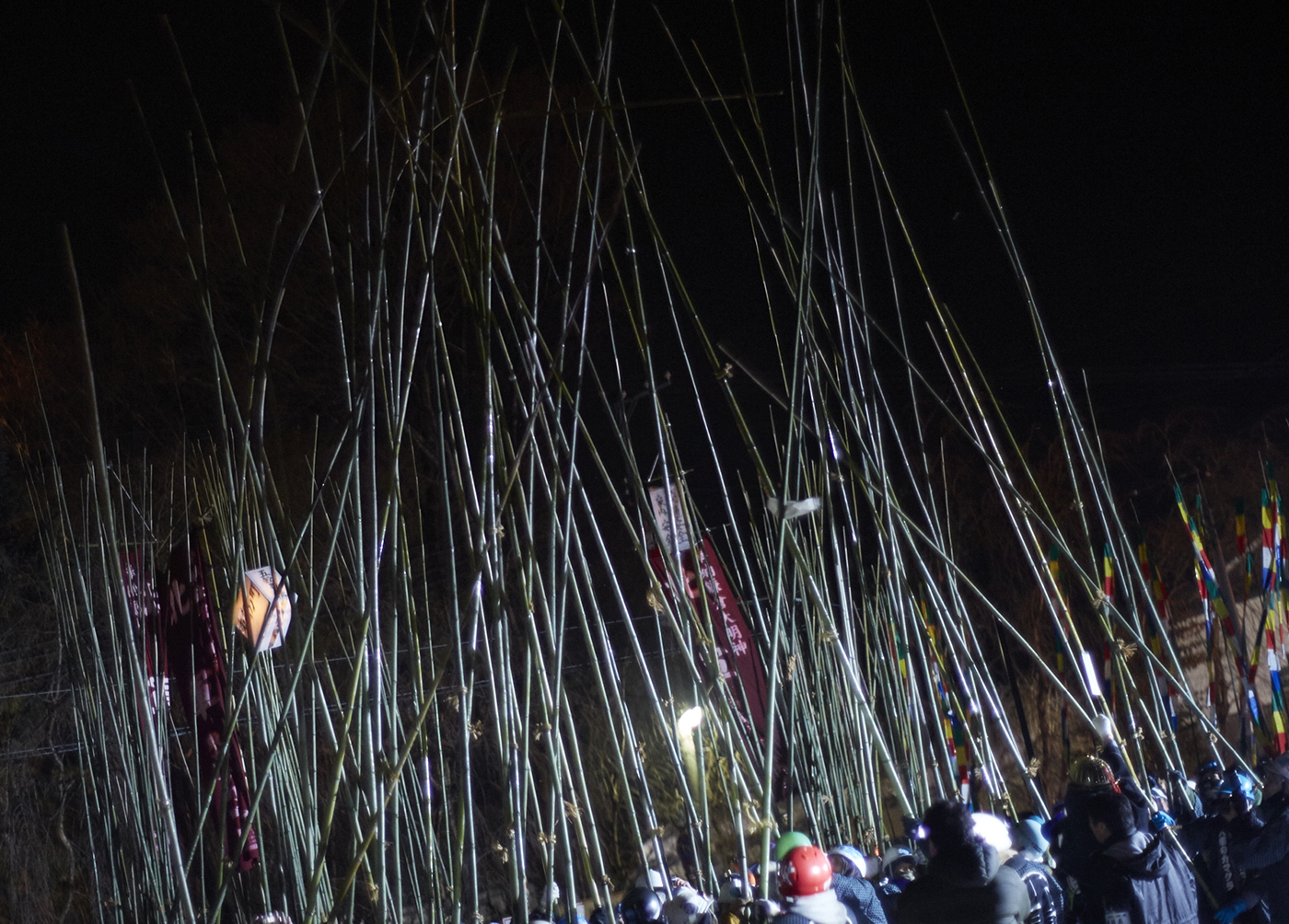
Once we arrive at the venue, there’s a big fireworks display and the Takeuchi begins.
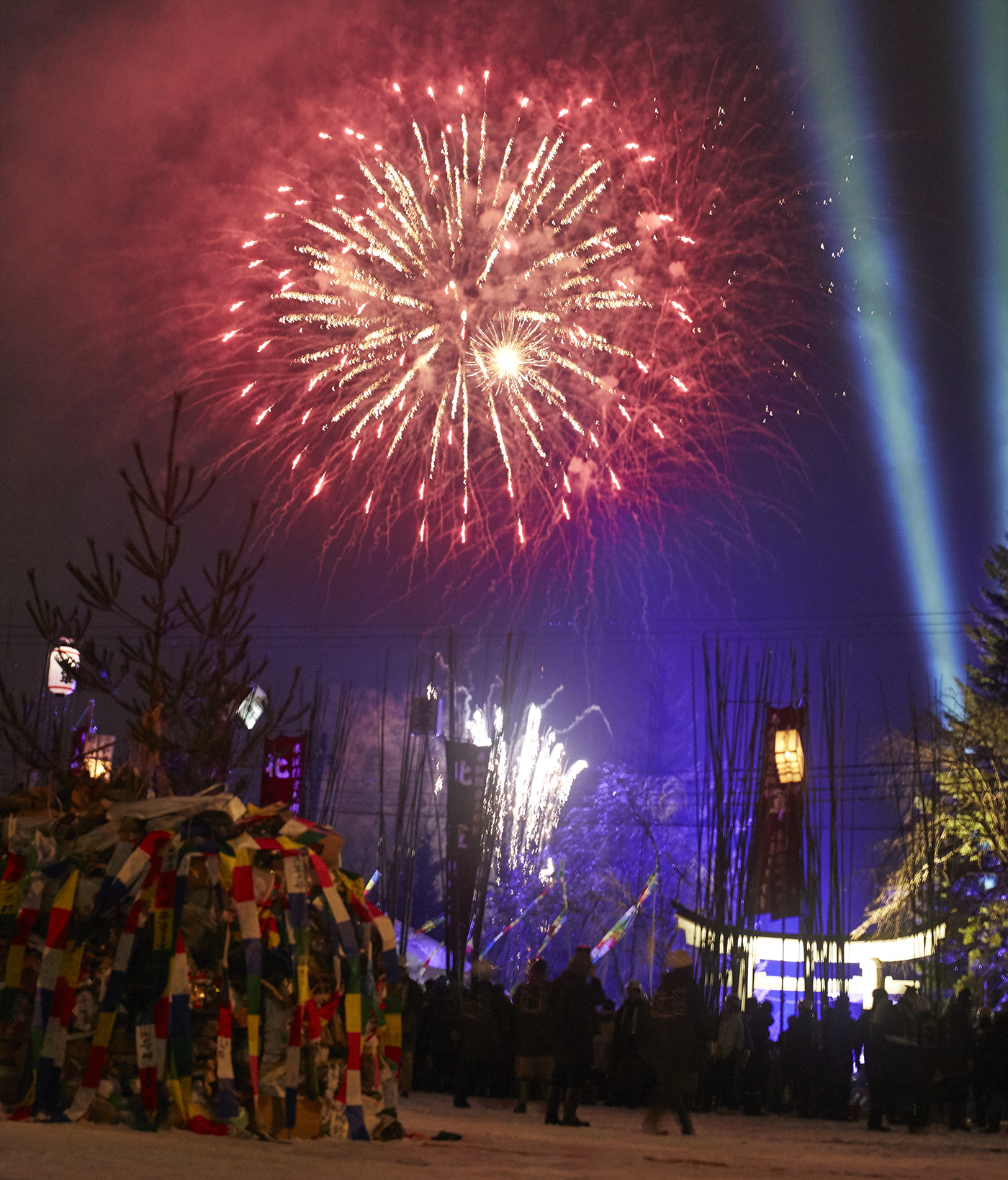
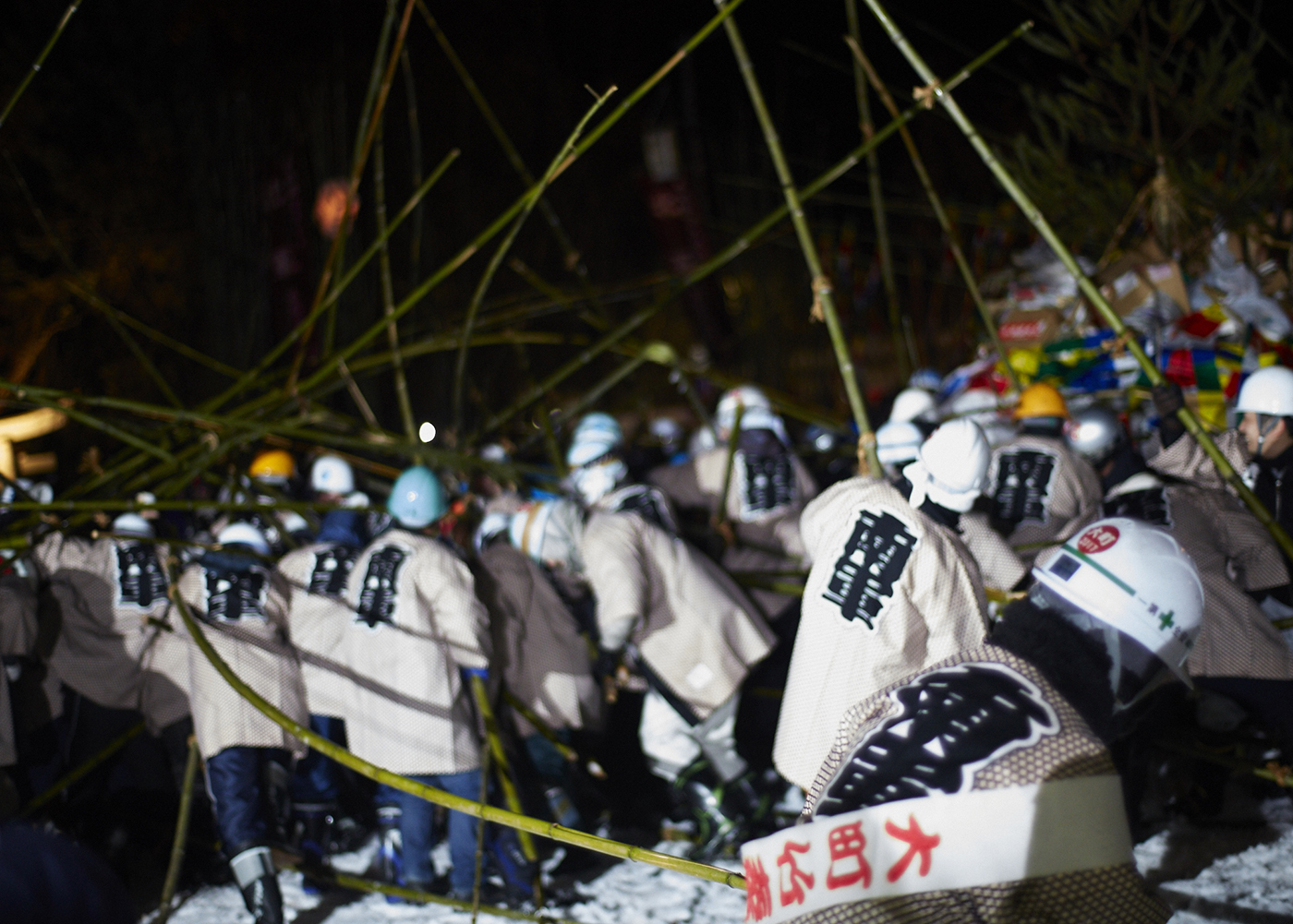
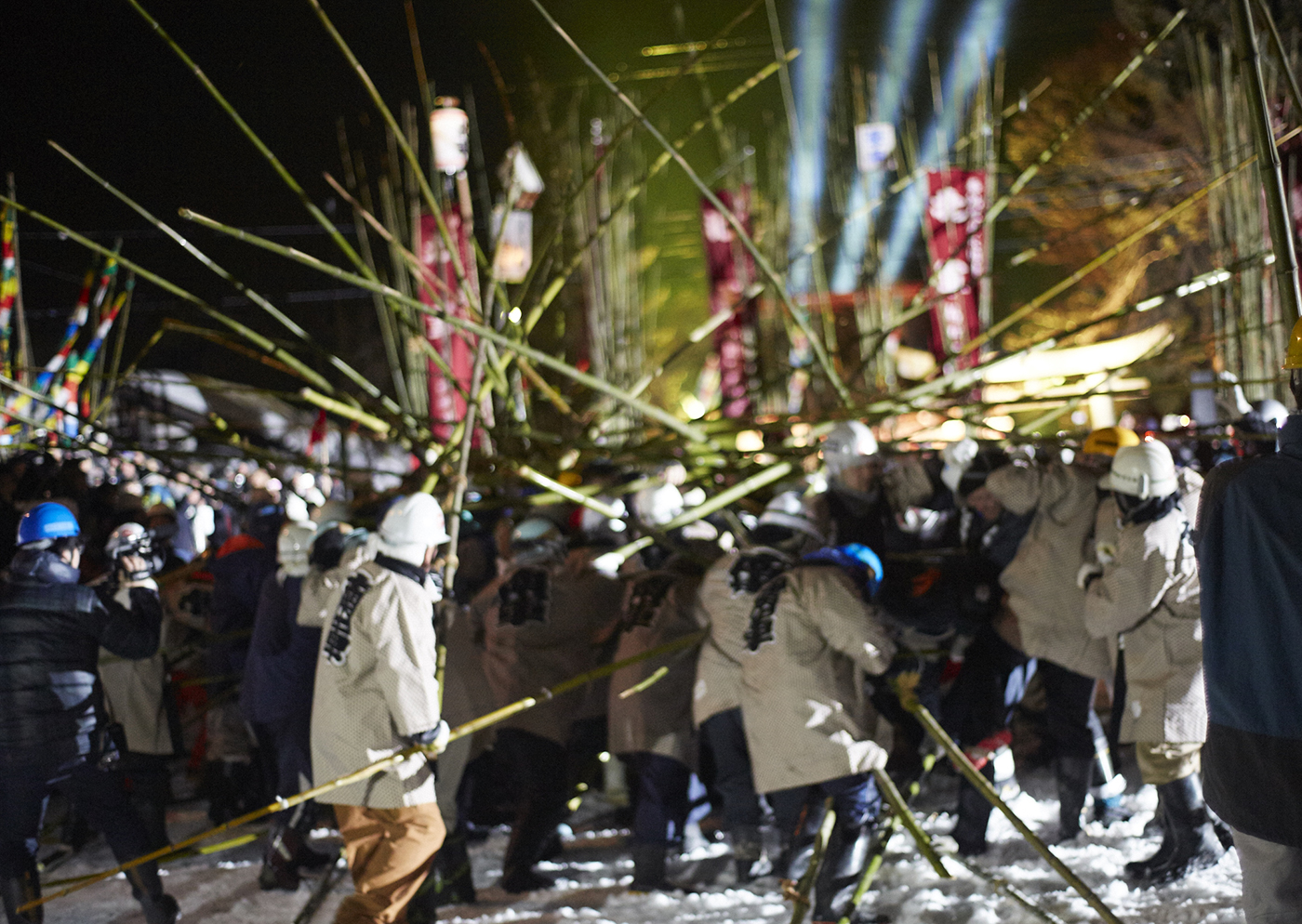
After the second round, the Tenpitsu-yaki starts up in the middle of the field. The place is ablaze with color, with flames and the multi-colored pennants. They say that the higher the flames flare up, the more likely it is that the wishes written on the tenpitsu will come true. The third round starts while the flames are still flickering strongly.
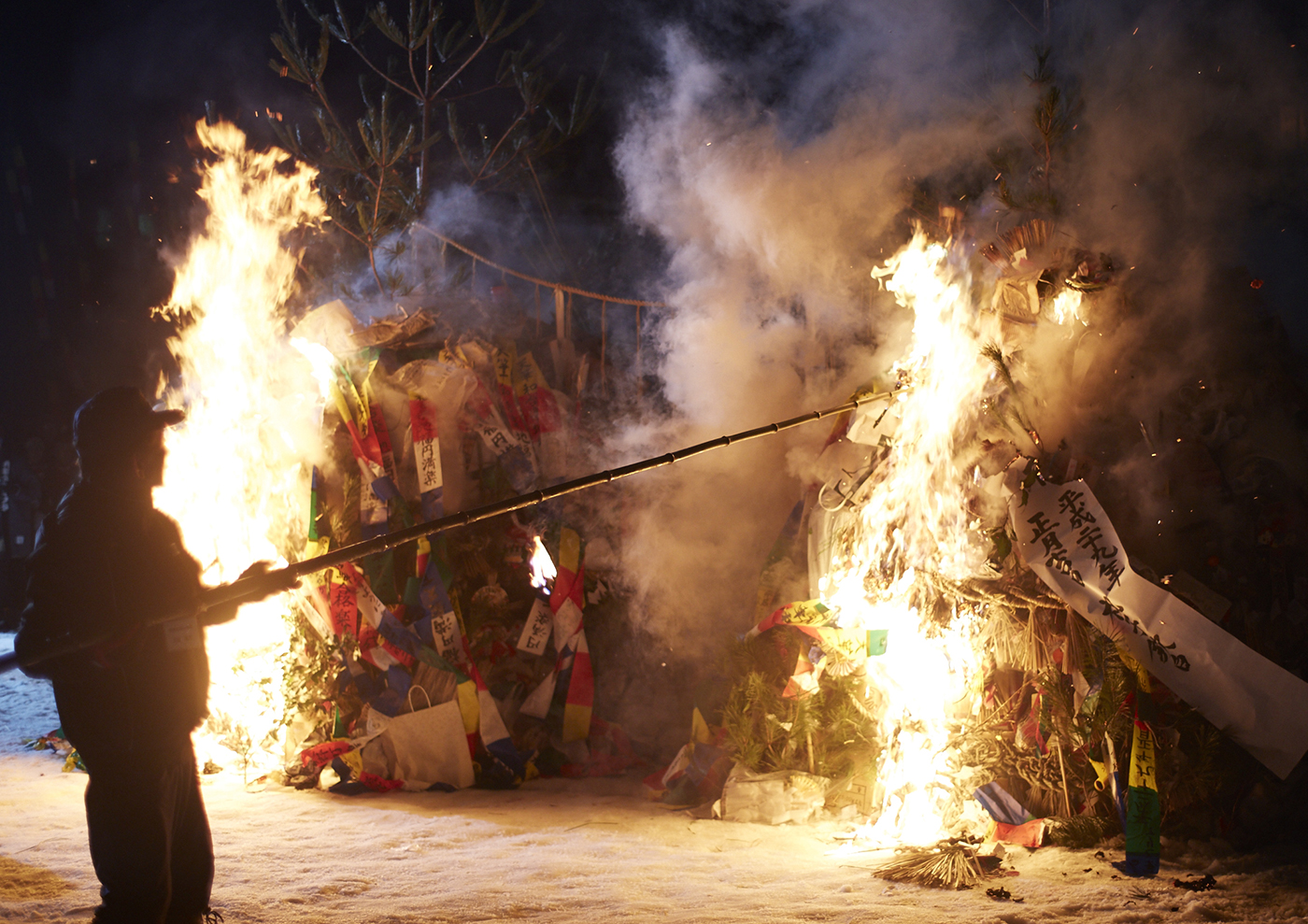
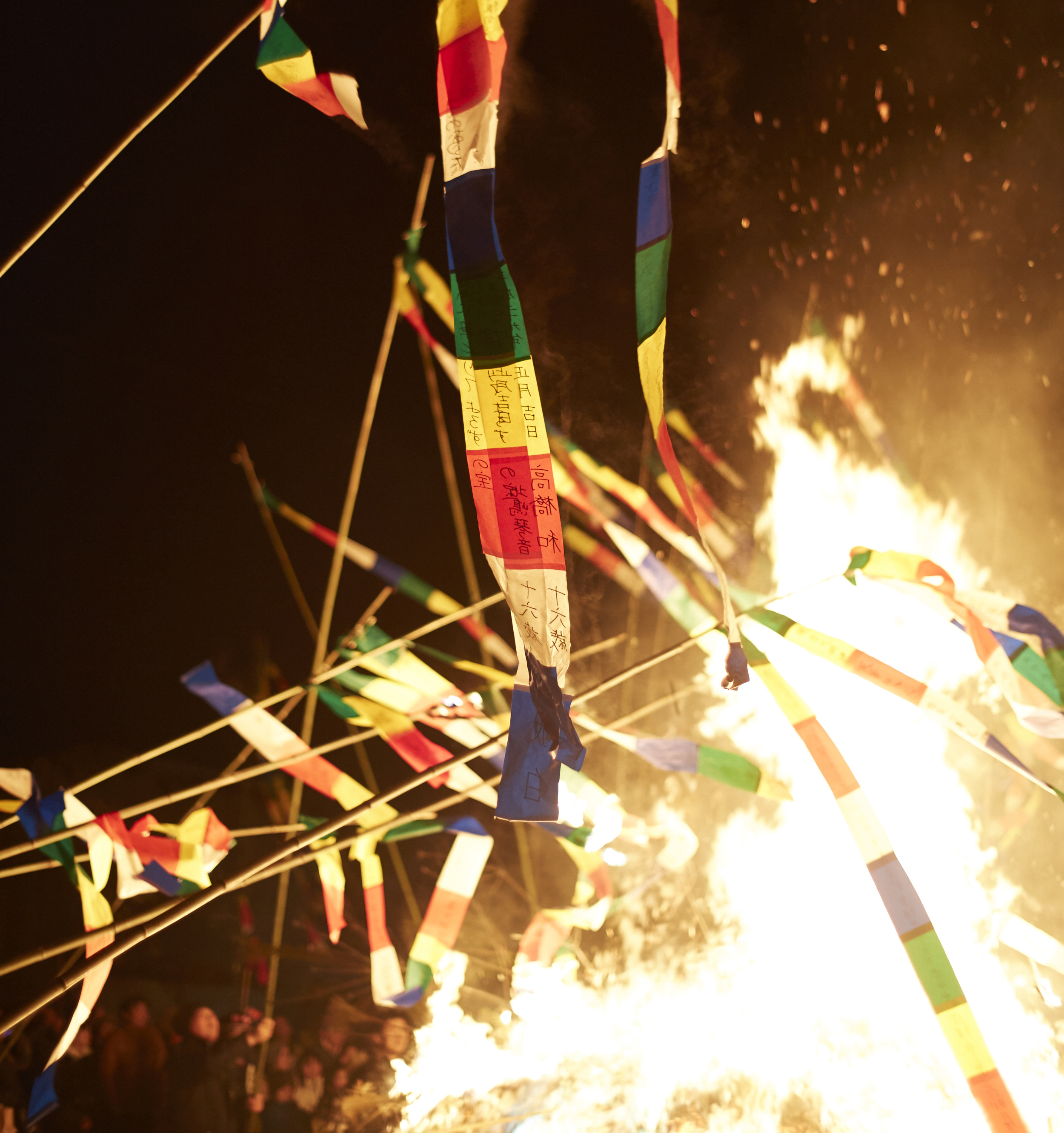
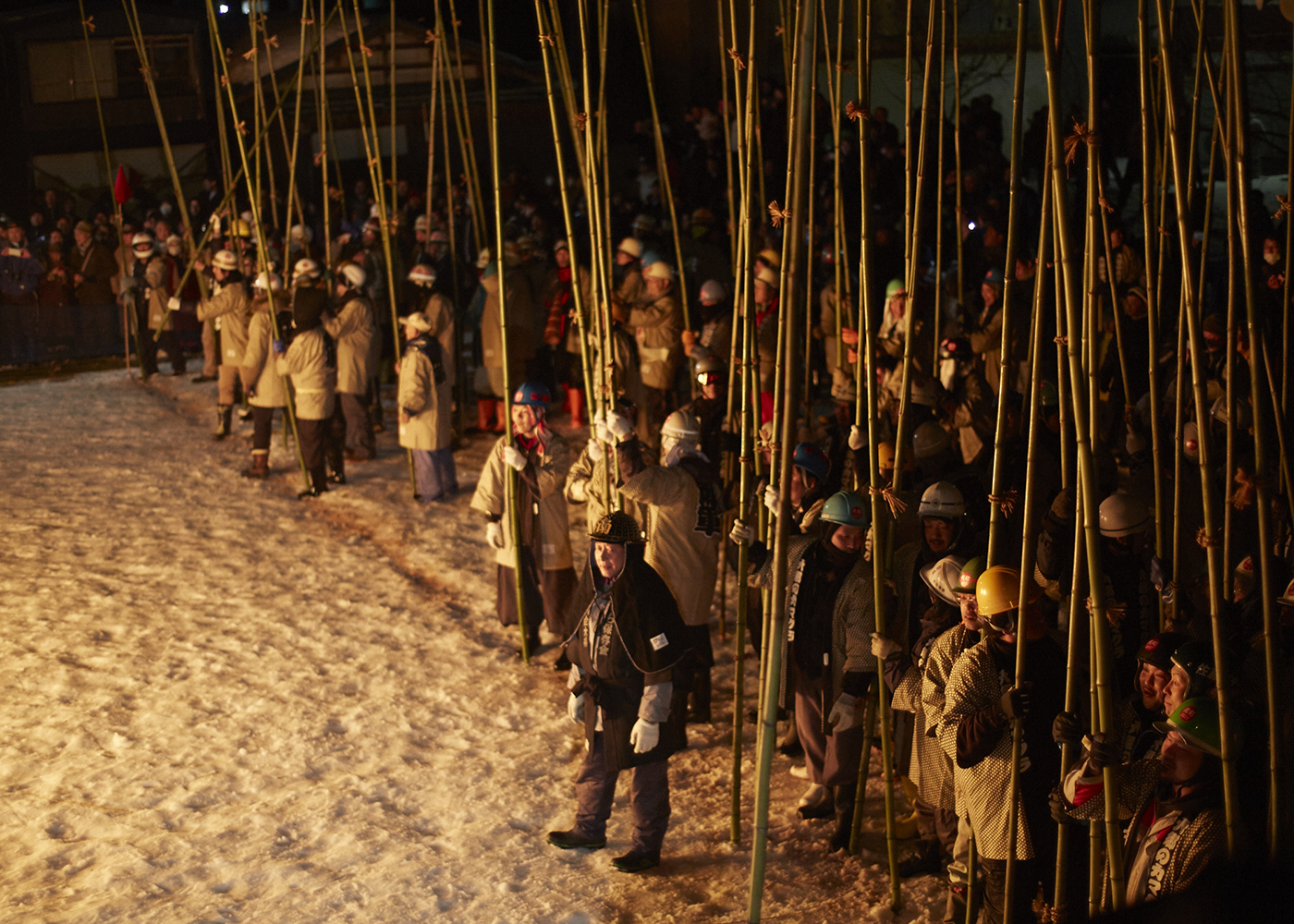
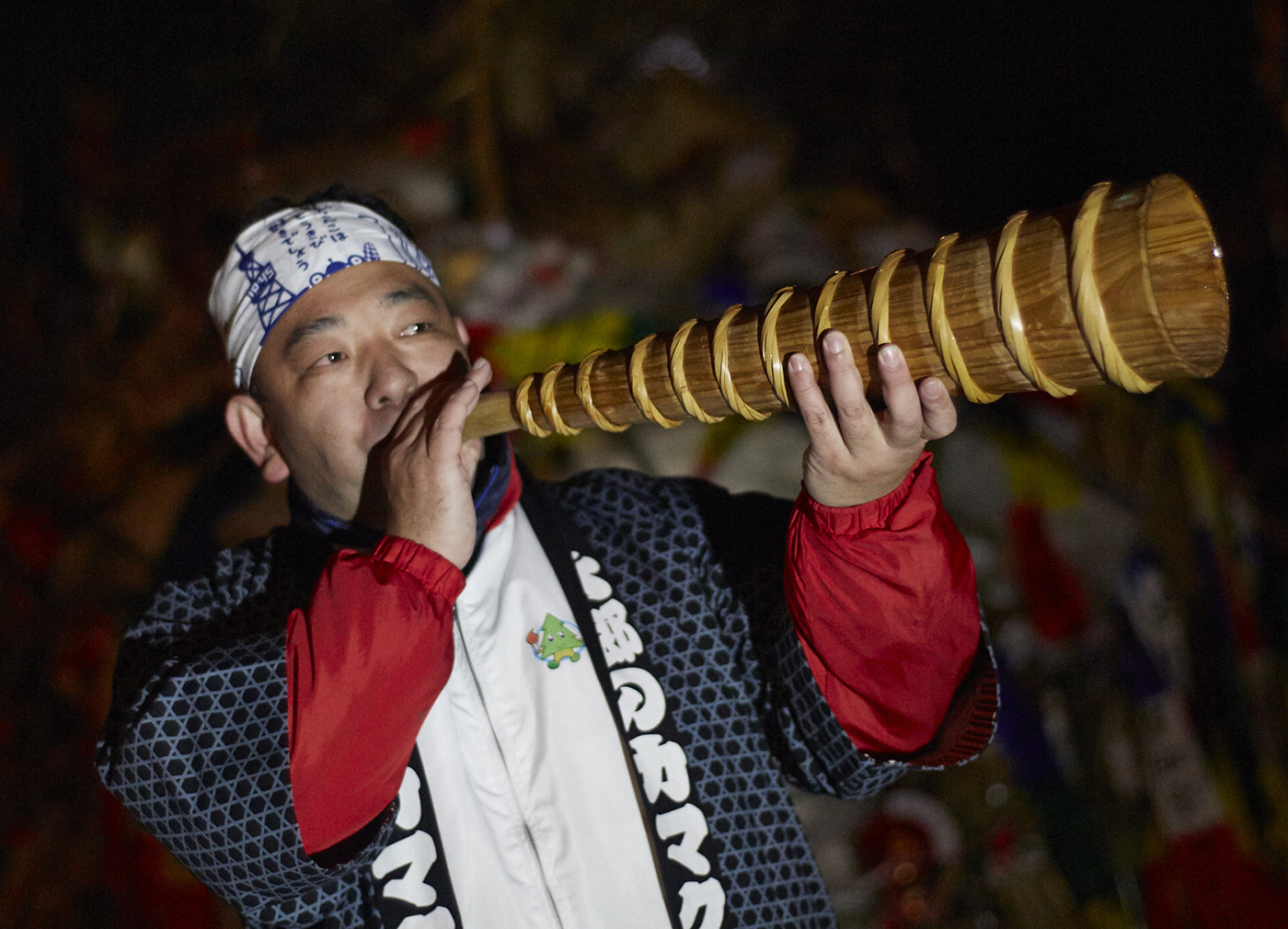
A wooden conch sounds out, “BAAAA!” The two armies come together, their bamboo sticks clashing noisily against each other. As the sticks get tangled together, men and bamboo become one swirling mass, and the pushing and jostling begins. Watch the video to see how this violent battle unfolded!
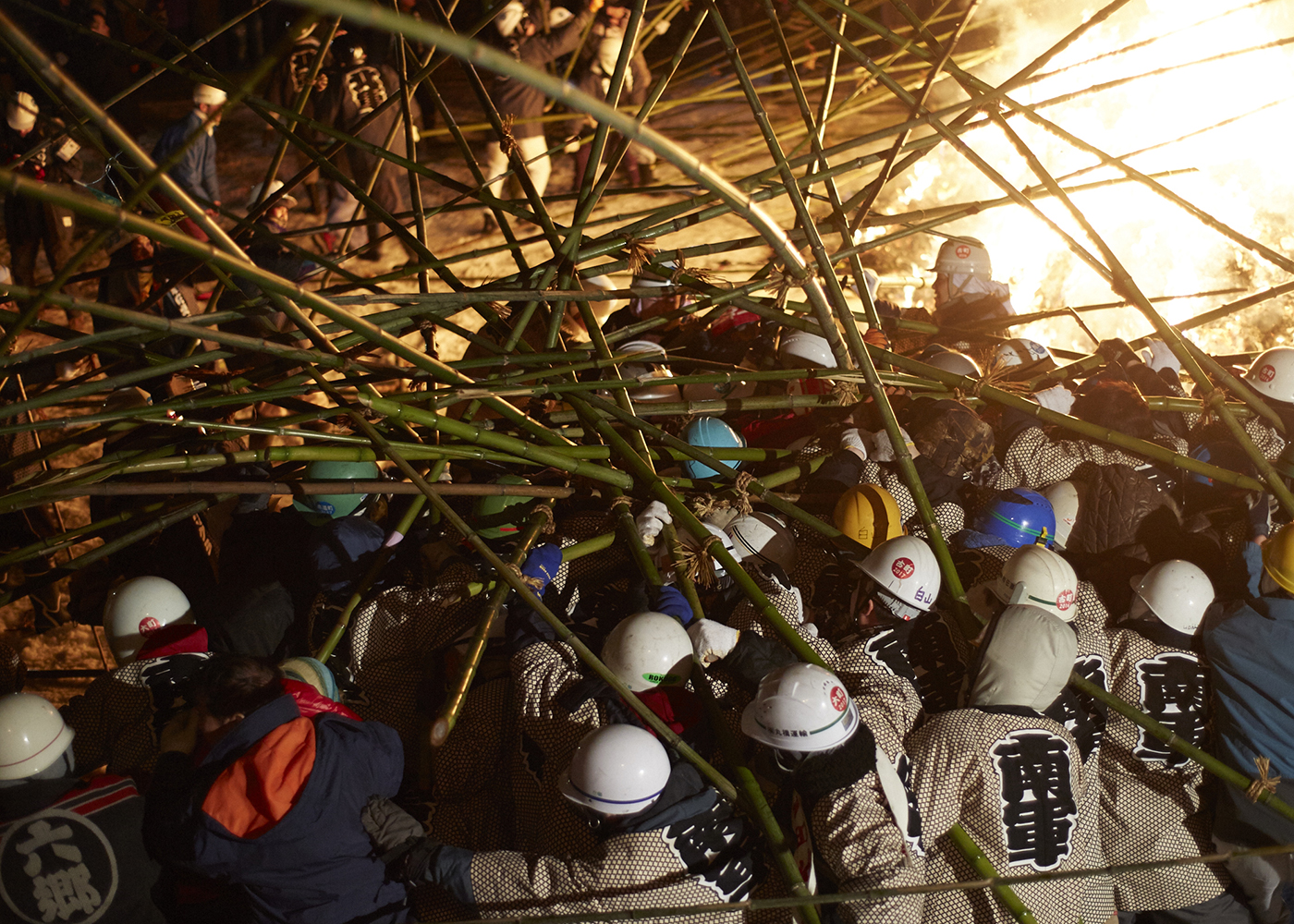
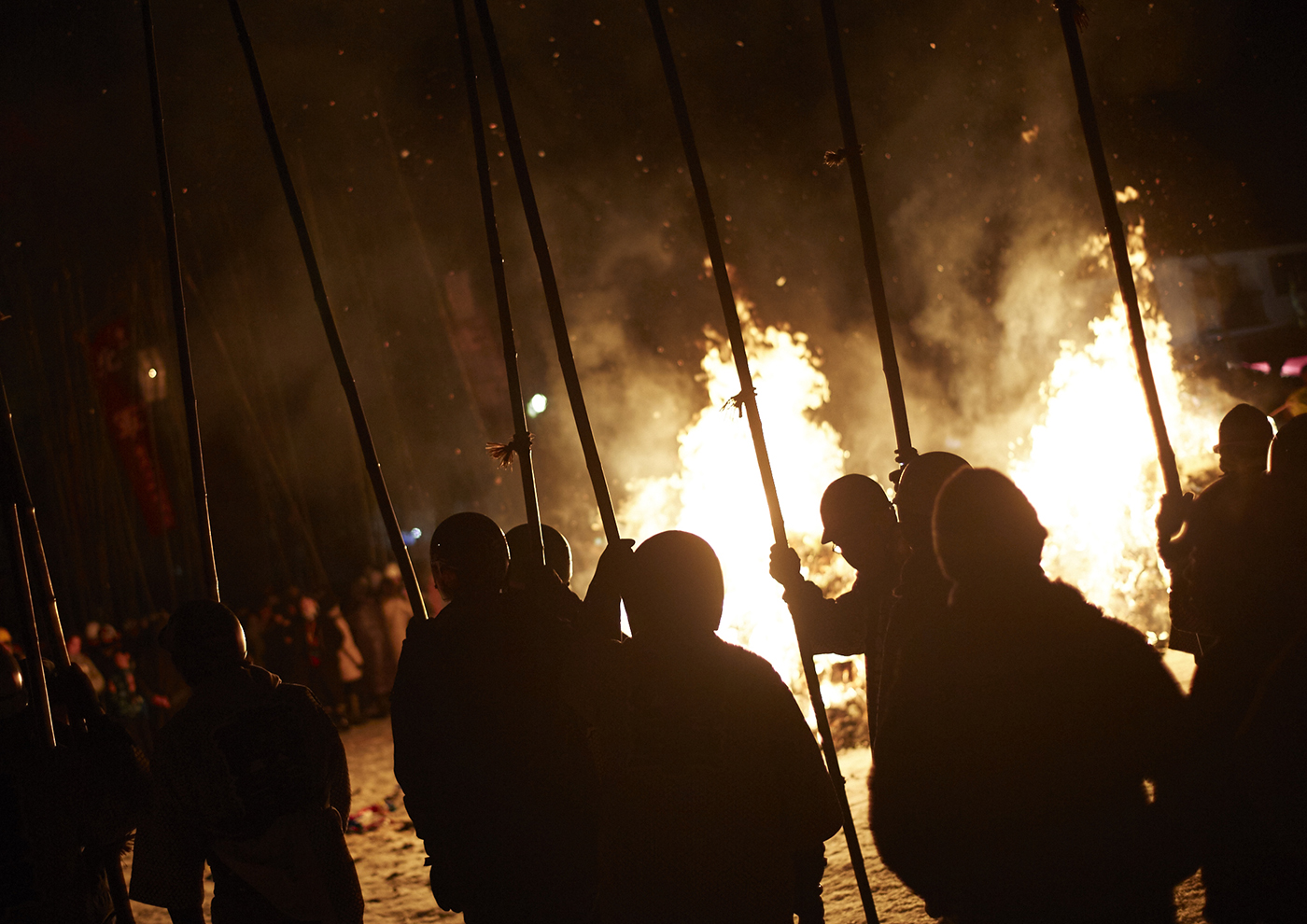
After a while, the signal for the end of the contest sounds out and the winner is announced. The result is a draw. Typically, if the North wins, there will be a bumper harvest that year, and if the South wins, the price of rice will rise. This year’s draw means that there will be a bumper harvest and that the price of rice will go up. It’s a surprise result, and that marks the end of this year’s event.
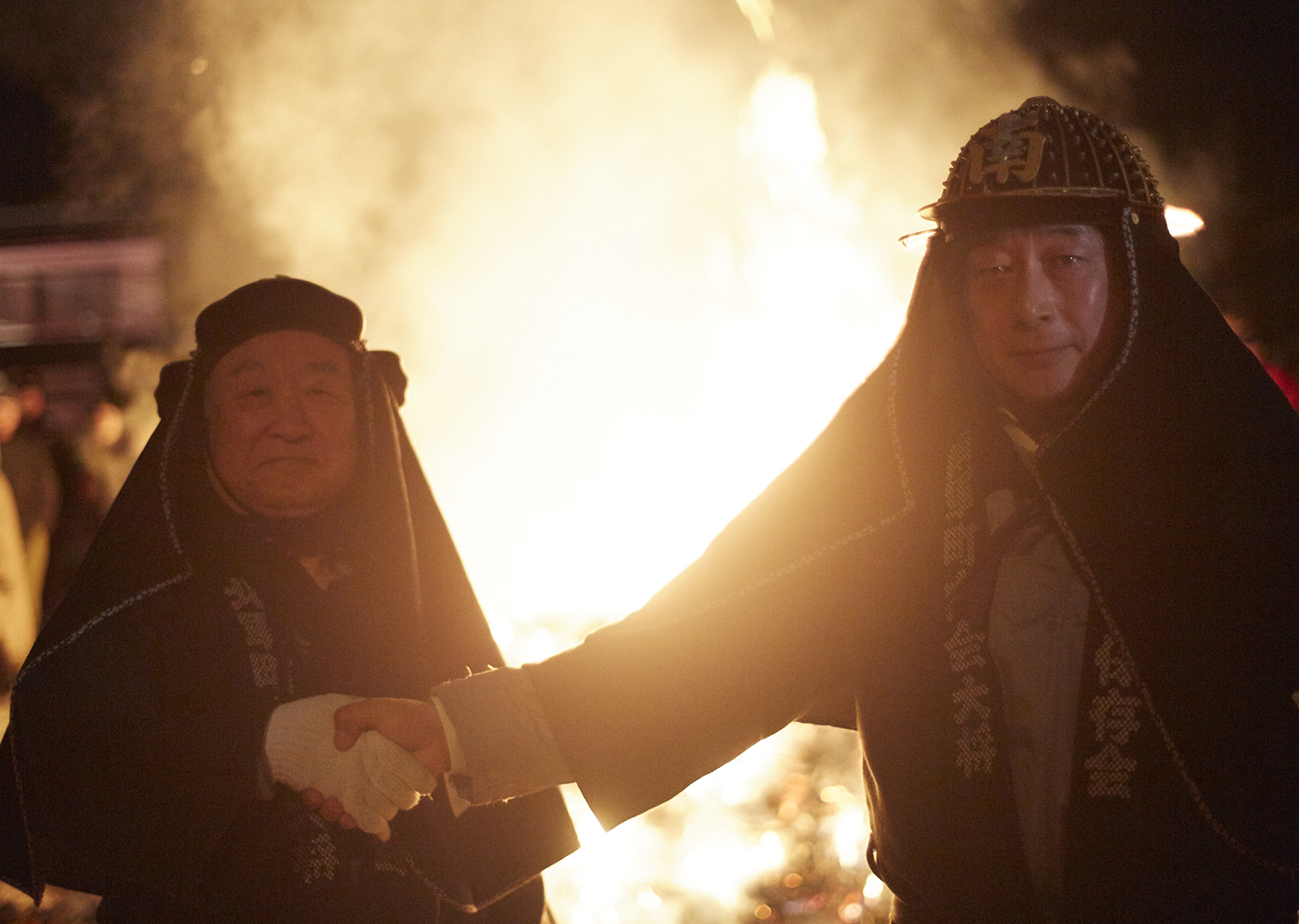
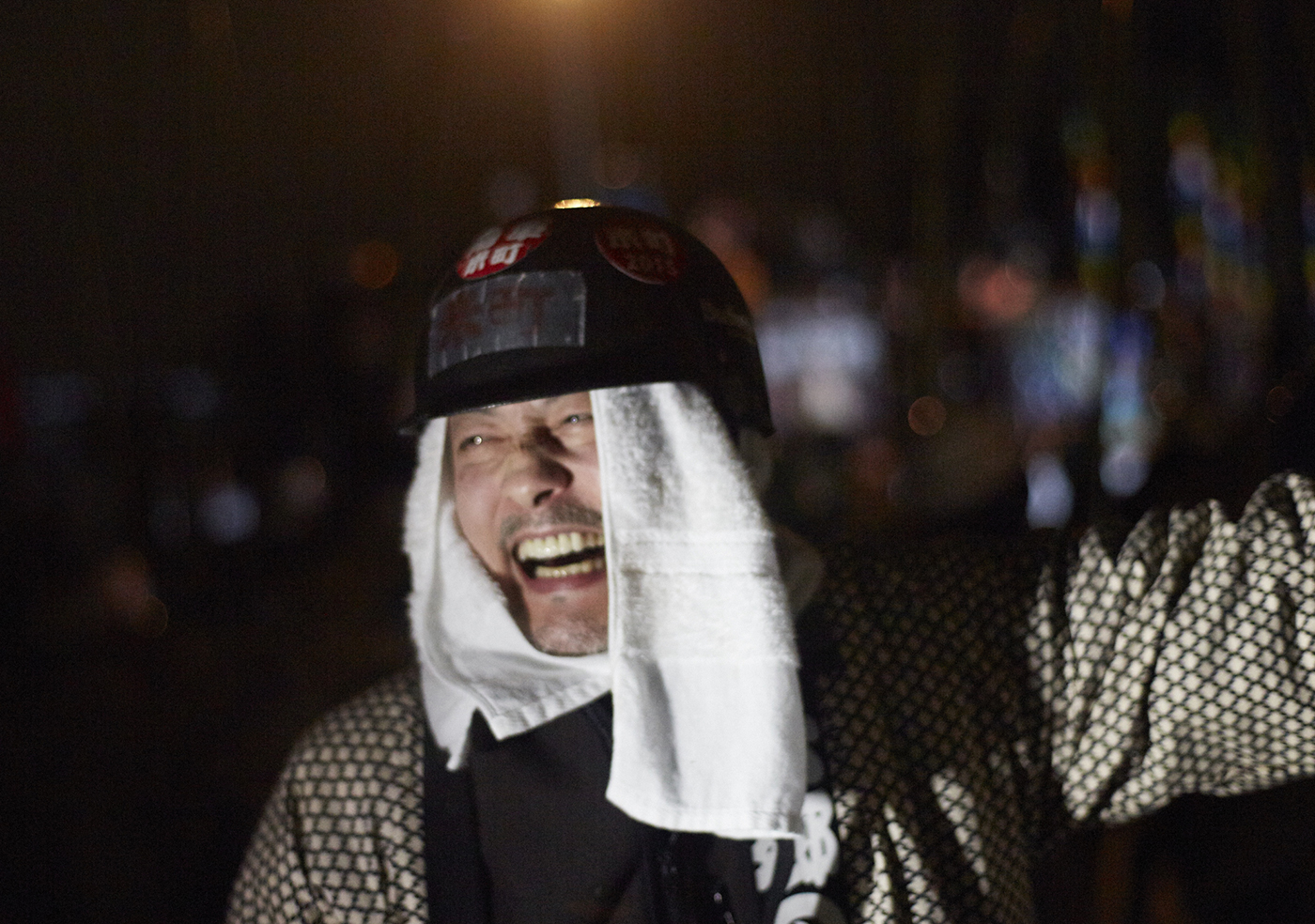
The Rokugo Kamakura combines two very contrasting experiences: calm and colorful tenpitsu which carry the town’s wishes for the year on them and the wild and violent atmosphere of the Takeuchi.
Next time, we’re going to learn about the most famous kamakura event, the Yokote Kamakura.
